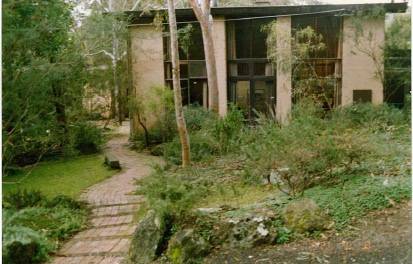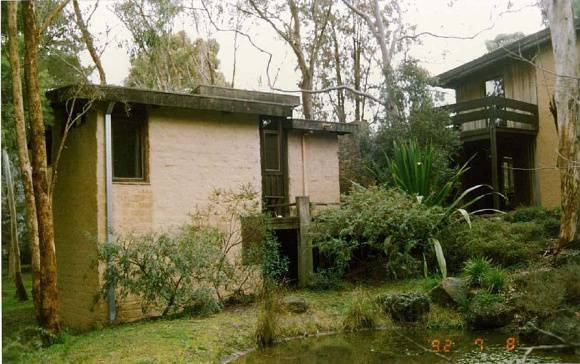| Back to search results » | Back to search page » |
|
PETER GLASS 1) ADOBE RESIDENCE AND 2) GARDEN - "TANTOON"
Other NameTantoon Location75 JOHN STREET ELTHAM, NILLUMBIK SHIRE LevelIncluded in Heritage Overlay |
|
Statement of Significance
REVISED STATEMENT OF SIGNIFICANCE, CONTEXT, 2010 What is significant?
How is it significant?
Why is it significant? The garden is historically significant because it is designed to complement the house and the natural landscape; this integrated approach to development/ garden design is synonymous with Eltham in this period (Criteria A & D). The garden is historically and socially significant because it was the site of the first nursery established by Peter Glass from which Ellis Stones and other early practitioners in the native plant garden movement acquired plants. It is also historically and socially significant for its connections with Gordon Ford (one of the first Australian bush landscape designers and a member of the native plant movement) who lived opposite (HO153) and supplied eucalyptus cladocalyx from the Mount Macedon Forest Commission nursery for the garden (Criterion H). The garden is aesthetically significant because it features: eucalyptus masculata, e.citriodora and casuarina torulosa, acacias, oryanthes palmeri and other diverse native plants and includes a small pond which has been the subject of several paintings by Phillip Glass (Criteria H & E).
The c1958-59 adobe residence including the 1967 and 1977 additions, and the c1939 garden and the entire site to the title boundaries.
The c1958-59 adobe residence and garden are historically, socially, architecturally and aesthetically significant to the Shire of Nillumbik.
The c1958-1977 adobe residence is historically significant as an excellent illustration of a dwelling that has been designed to complement the natural landscape. This sort of dwelling is synonymous with the Eltham of the 1950s, 1960s and 1970s and was popularised throughout the State in the 1960s (Criteria A & D). The house is architecturally significant because it illustrates common characteristics of 'Eltham-style' buildings of the period: its construction in stages, the use of mud brick and the double storeyed main room with its unusual staircase and the detailing in timber (Criterion D). The house is historically significant because it is associated with Peter Glass who was one of the earliest practitioners of the bush landscaping style (Criteria H).
Group
Parks, Gardens and Trees
Category
Garden Residential





